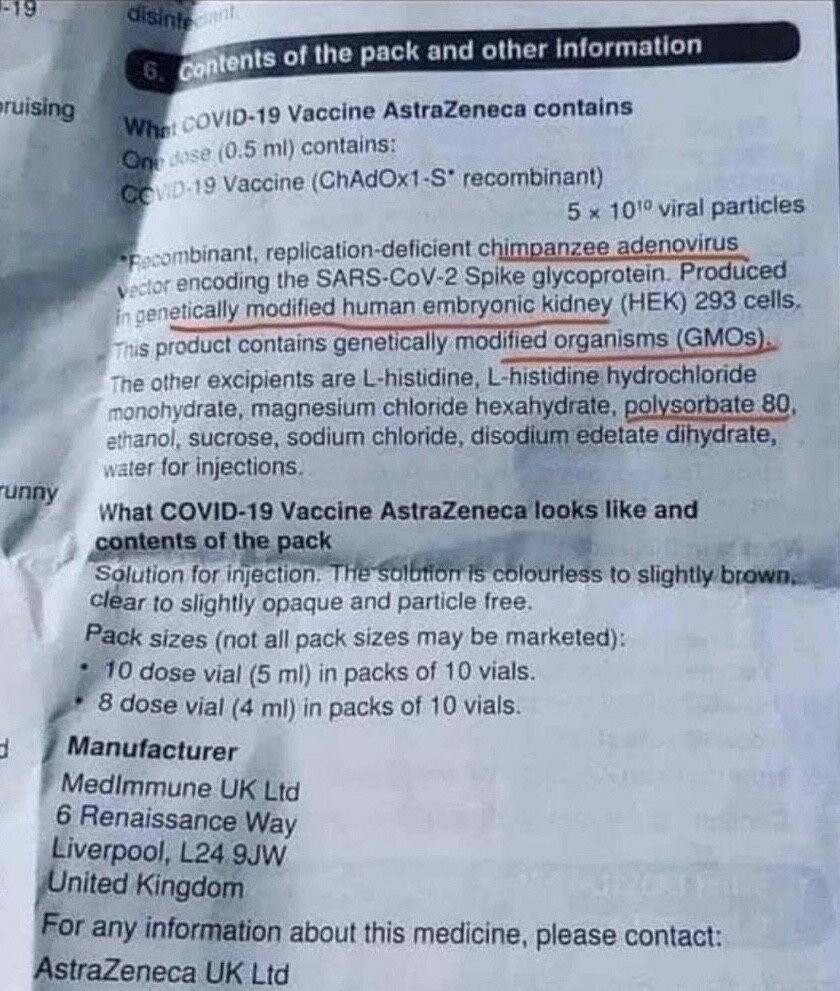A New Creation, Conspiracy Realist, ICU/ER RN. Are U grafted in the Tree of Life or still part of the tree of the Knowledge of GOOD & evil?
by Y Mei · 2012 · Cited by 68 · Related articles
4 Apr 2012 — Both lentivirus and adeno- associated virus (AAV) vectors have been used to deliver optogenetic constructs into genetically ...
by KA McGuire · 2011 · Cited by 73 · Related articles
We demonstrate that ROS are produced within minutes of adenovirus type 5 (Ad5) infection of macrophages and that oxidative stress supports ...
by G Bjørklund · 2020 · Cited by 25 · Related articles
5 Feb 2020 — Children with ASD diagnosis are considered more vulnerable to oxidative stress because of their imbalance in intracellular and ...
Optogenetic regulation of transcription | BMC Neuroscience | Full Text
Optogenetics has become widely recognized for its success in real-time control of brain neurons by utilizing non-mammalian photosensitive proteins to open or close membrane channels. Here we review a less well known type of optogenetic constructs that employs photosensitive proteins to transduce the..
https://bmcneurosci.biomedcentral.com/articles/10.1186/s12868-018-0411-6Principles of Optogenetic Methods and Their Application to Cardiac Experimental Systems
Optogenetic techniques permit studies of excitable tissue through genetically expressed light-gated microbial channels or pumps permitting transmembrane ion movement. Light activation of these proteins modulates cellular excitability with millisecond ...
https://www.ncbi.nlm.nih.gov/pmc/articles/PMC6749684/
by EA Ferenczi · 2019 · Cited by 22 · Related articles
11 Sept 2019 — It is also possible to express optogenetic constructs in neonatal and adult primary ventricular cardiomyocytes using viral vector ...
Of the many viruses screened, adenovirus 36 has been found to be a strong candidate virus that is associated with obesity, based on evidence in various model systems as well as clinical data. The mechanism of how the adenovirus could lead to obesity is not known and this paper proposes some new insights into how oxidative stress could be a possible mechanism of how adenovirus might lead to obesity. This paper reviews the relevant literature of both the effect of adenovirus on cells' anti-oxidant response and the link between obesity and oxidative stress.
"Our results suggest that oxidative stress may be partly responsible for the toxicity of adenovirus transduction."
https://jvi.asm.org/content/76/1/355
Redox Regulation of Adenovirus-Induced AP-1 Activation by Overexpression of Manganese-Containing Superoxide Dismutase | Journal of Virology
Adenovirus gene therapy is a promising tool in the clinical treatment of many genetic and acquired diseases. However, it has also caused pathogenic effects in organs such as the liver. The redox-sensitive transcription factors AP-1 and NF-κB have been implicated in these effects. To study the mechan..
https://jvi.asm.org/content/76/1/355Adenovirus E1A blocks oxidant-dependent ferritin induction and sensitizes cells to pro-oxidant cytotoxicity - ScienceDirect
Ferritin is a protein that oxidizes and sequesters intracellular iron in a mineral core. We have reported that the E1A oncogene selectively represses …
https://www.sciencedirect.com/science/article/pii/S001457939901443X"Concordantly, E1A sensitized cells to the cytotoxic effects of oxidative stress and enhanced the accumulation of reactive oxygen species in response to pro-oxidant challenge. These results demonstrate that expression of E1A impedes the cellular response to oxidative stress, including the induction of ferritin."
Research in Alzheimer disease has recently demonstrated compelling evidence on the importance of oxidative processes in its pathogenesis. Cellular changes show that oxidative stress is an event that precedes the appearance of the hallmark pathologies of the disease, neurofibrillary tangles, and senile plaques.
A viral infection that involves virus invasion, protein synthesis, and virion assembly is typically accompanied by sharp fluctuations in the intracellular levels of metabolites. Under certain conditions, dramatic metabolic shifts can result in various types of cell death. Here, we review different types of adenovirus-induced cell death associated with changes in metabolic profiles of the infected cells.
As evidenced by experimental data, in most cases changes in the metabolome precede cell death rather than represent its consequence. In our previous study, the induction of autophagic cell death was observed following adenovirus-mediated lactate production, acetyl-CoA accumulation, and ATP release, while apoptosis was demonstrated to be modulated by alterations in acetate and asparagine metabolism.
On the other hand, adenovirus-induced ROS production and ATP depletion were demonstrated to play a significant role in the process of necrotic cell death. Interestingly, the accumulation of ceramide compounds was found to contribute to the induction of all the three types of cell death mentioned above. Eventually, the characterization of metabolite analysis could help in uncovering the molecular mechanism of adenovirus-mediated cell death induction and contribute to the development of efficacious oncolytic adenoviral vectors.
Oxidative stress is involved in the pathogenesis of many diseases. Overexpression of antioxidant enzymes by gene therapy may protect tissues from oxidative damage. Because the reactive oxygen species hydrogen peroxide can diffuse across cell membranes, we hypothesized that overexpression of the antioxidant catalase within certain cells might protect neighboring cells.

